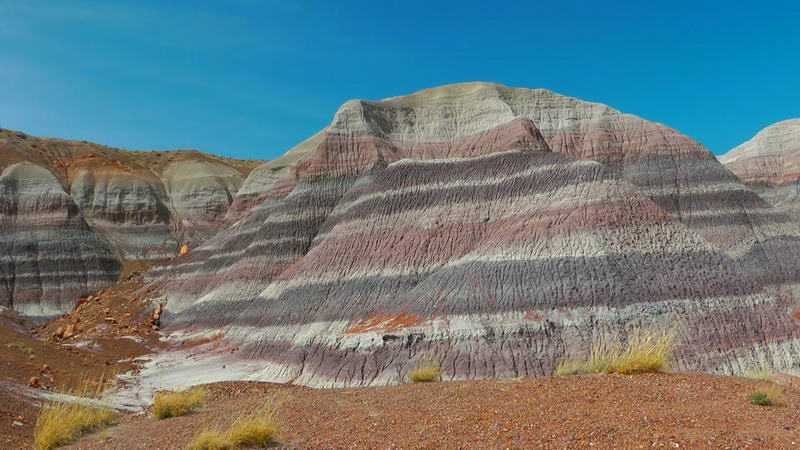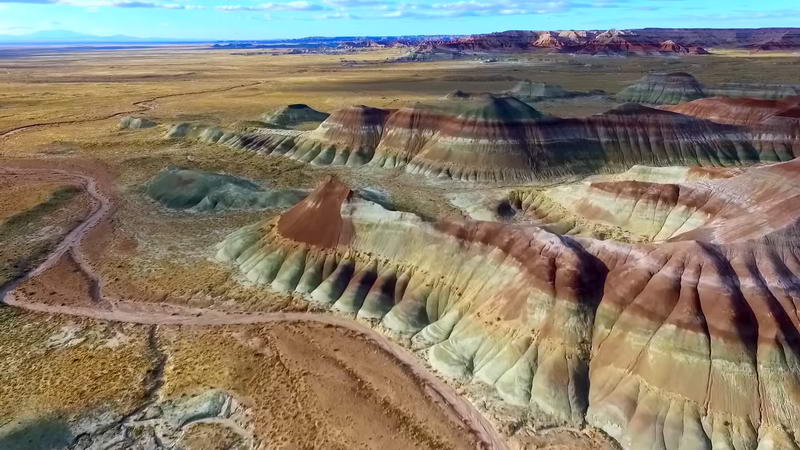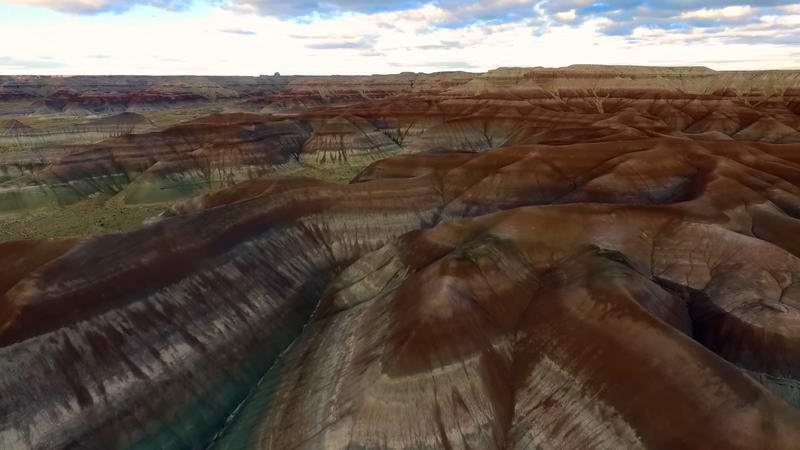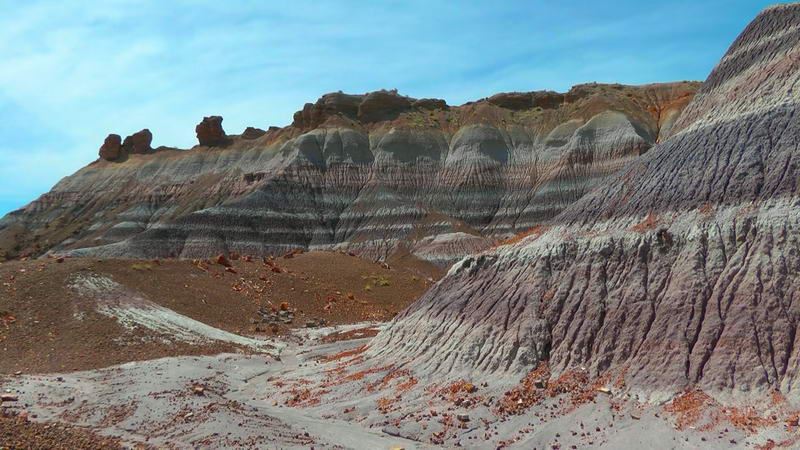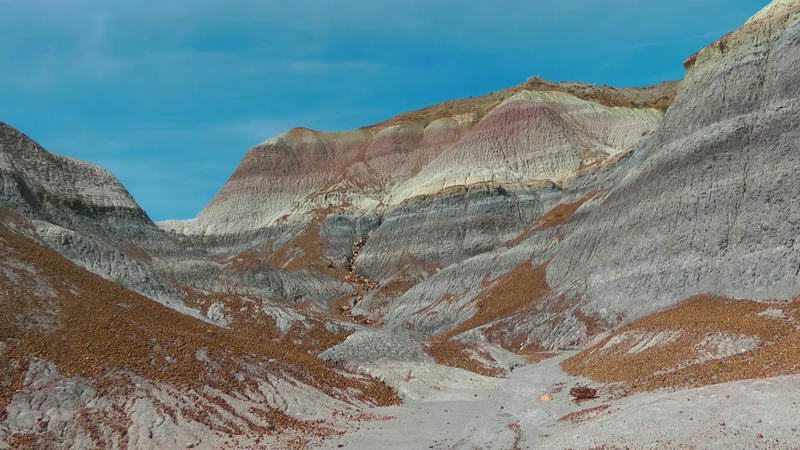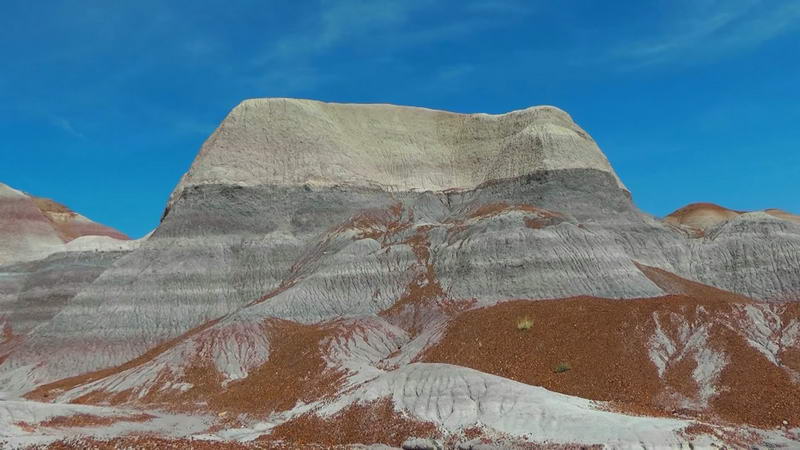The painted desert, Arizona, United is mainly comprising of multi-colored badlands (dry terrain, having extensively eroded softer sedimentary rocks and clay rich soil by action of wind and water) extending from east end of Grand Canyon towards the south eastern direction into the Petrified Forest National park. It has a length of about 256 kms and width varies from 16 to 64 kms and covers an area of about 20,000 Sq. Km. It is famous for brilliantly colored rocks that are having bands of vivid red, blue, yellow, white and even lavender.
- Things to know:
- What is it – An area of badlands within the Petrified Forest National Park.
- Best season to visit – All year around
- Nearest town – Holbrook (64 Km)
- Things not be missed – Painted Desert Inn National Historic Landmark.
- How to get there? – By road
- You should know – Entry fee applicable. Closed at night.
- The formation of these hills took place from stratified layers of sediments comprising of mudstone, shale and sandstone in a huge floodplain and are considered to be part of Chinle formation. The elevations range from 1350 to 2000 meters.
- Majority of the deposits are sandstone. Depending on age, amount of erosion and climate prevalent at the time of laying down of a layer, its color can vary. Reddish colors are due to oxidation of iron and manganese present in the rocks.
- Also, rate of laying down has a big impact on colors. When laying down process is slow in speed, the concentration of iron and Aluminium oxides is high giving it a orange, red and pink color. When the rate of laying is fast, there is a definite lack of oxygen, resulting in blue, lavender and grey colors.
- The area is basically a high plateau with arid climate and scant vegetation affected heavily by wind and water erosion. It receives annual rainfall of 5 to 9 inches and yearly temperature varies between -31 to 41 Deg Centigrade.
- In southern part of the desert, we have black forest bed, due to formation of fossils of trees from coniferous forest over millions of years (Triassic Age – 252 to 201 million years ago). Also available are fossils of some prehistoric plants, animals and tracks of dinosaurs.
- Major portion of the desert is located in Navajo Nation and archaeological surveys have revealed evidence of early human habitations for about 2000 years.
- The place was discovered in the 16th century by Spanish explorers, who passed through the area and named it as “El Desierto Pintado”, which is Spanish for The Painted Deserts. At the time the place was uninhabited.
- Painted Desert Inn: It was built in 1924 by Herbert Lore for purposes of lodging and other tourist services and purchased by the National Monument in 1936. After 1947, the famous architect Mary Colter of many other Grand Canyon attractions like Desert View Watchtower and Hopi House, was commissioned to redesign portions of the Inn. Inn was closed when I-40 took over for Route 66. It was left in abandoned condition to decay, before getting place in 1975, on the National Register of Historic Places. Today, it has been restored and serves as a tourist point having a gift shop and bookstore, with no lodging facilities.
